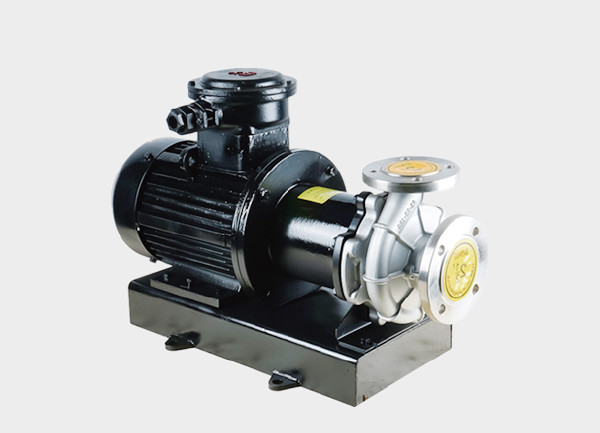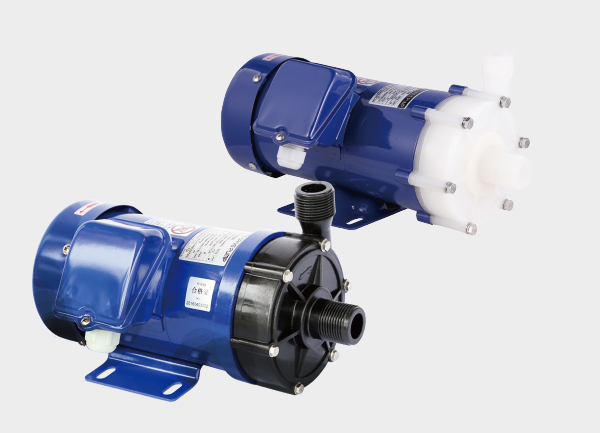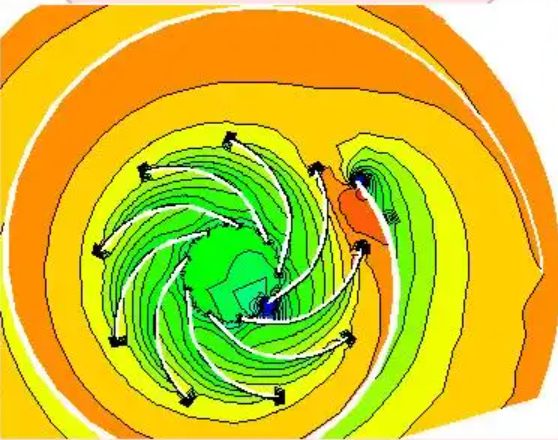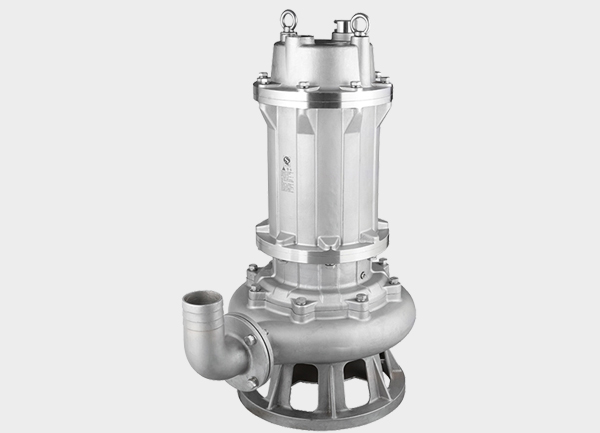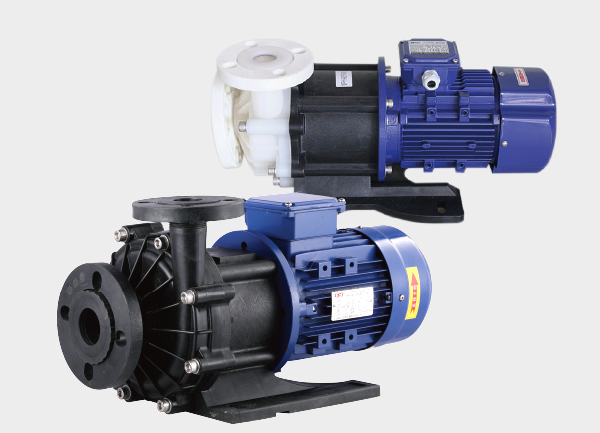Chemical transfer pumps are specialized fluid handling devices designed for corrosive, flammable, explosive, viscous, particle-laden, or toxic chemical liquids. Their core function is to enable safe, stable, and low-leakage (or zero-leakage) transfer of chemical media in industries such as chemical processing, pharmaceuticals, food & beverage, environmental protection, and semiconductors.
Compared with standard water pumps, chemical pumps are engineered around two design priorities:
Chemical compatibility (resistance to corrosion, solvents, and aggressive media)
Process adaptability (ability to handle viscosity, solids, temperature, and hazardous conditions).
1. Key Components of a Chemical Transfer Pump
The design and materials of a chemical pump directly determine its durability, corrosion resistance, and sealing reliability.
(a) Wetted Components (Pump Casing, Impeller/Rotors, Cover)
These parts directly contact the chemical fluid. Materials are chosen based on corrosion level:
316L Stainless Steel – For mild to medium corrosion (e.g., dilute HCl, sodium hydroxide).
PP (Polypropylene) – For weak acids, weak alkalis, and food-grade organic acids (e.g., citric acid).
PVDF (Polyvinylidene Fluoride) – Excellent resistance to strong acids/bases such as concentrated HCl, dilute sulfuric acid, and nitric acid.
PTFE (Teflon®) – “King of corrosion resistance,” ideal for hydrofluoric acid, concentrated nitric acid, and strong oxidizers.
Ceramic – Combines abrasion resistance and chemical resistance, suitable for fluids with fine particles (e.g., electroplating wastewater).
(b) Sealing Systems (Leak Prevention)
Prevent leakage between pump shaft and casing:
Mechanical Seal – Carbon, silicon carbide, or PTFE faces; suitable for corrosive fluids at medium-to-high pressure.
Magnetic Drive Seal – Non-contact sealing via external and internal magnetic couplings; achieves zero leakage, ideal for toxic, flammable media (e.g., methanol, ammonia).
Packing Seal – Low cost but low sealing performance; only for low-pressure, non-hazardous fluids.
(c) Drive System (Power Source)
Standard Induction Motor – For non-hazardous, general transfer (acid/alkali tanks).
Explosion-Proof Motor – Certified for explosive environments (Ex d IIB T4).
Variable Frequency Motor (VFD) – Allows precise flow control, suitable for pharmaceuticals and electronics.
(d) Monitoring & Protection Systems
To ensure pump safety and extend lifespan:
Pressure Sensors – Prevent overpressure damage.
Temperature Sensors – Avoid motor or bearing overheating.
Overload Protection – Stops motor if load exceeds limit (e.g., viscous media).
2. Working Principles of Chemical Transfer Pumps
Chemical pumps operate mainly under two principles:
(a) Centrifugal Chemical Pumps (Most Common)
The motor drives the impeller to spin at high speed, generating centrifugal force.
Fluid is thrown outward, forming a high-pressure zone at the discharge.
A vacuum is created at the inlet, drawing new fluid in.
Advantages: Simple design, high flow rate, low cost.
Limitations: Not suitable for high-viscosity fluids (>100 cSt), slurries, or large particles (>1 mm). Susceptible to cavitation damage.
(b) Positive Displacement Chemical Pumps (For Special Fluids)
Fluid is transferred by mechanically reducing/expanding a chamber volume. Flow is proportional to motor speed.
Diaphragm Pumps (Air/Electric) – Strong self-priming, handles solids and corrosives, ideal for sludge, inks, and coatings.
Gear Pumps – Stable flow, excellent for viscous oils and resins; not suitable for solids.
Screw Pumps – Smooth, pulse-free delivery; perfect for viscous fluids (>1000 cSt) and fibrous suspensions (e.g., herbal extracts, syrups).
3. Types of Chemical Transfer Pumps & Applications
Centrifugal Pumps – Large flow, low head; used for low-viscosity acids/alkalis (sulfuric acid, nitric acid).
Magnetic Drive Pumps – Zero leakage; used for toxic, volatile, flammable fluids (methanol, toluene, ammonia).
Air-Operated Diaphragm Pumps – Explosion-proof, solid-handling, self-priming; ideal for wastewater, paints, inks.
Electric Diaphragm Pumps – Stable continuous flow; used in pharma (sterile solutions) and food (acidic additives).
Screw Pumps – High viscosity, high-pressure, pulse-free; used for adhesives, fruit jams, and resins.
4. Typical Industrial Applications
(a) Chemical Industry
Basic chemicals: Sulfuric acid, hydrochloric acid transfer → PVDF centrifugal pumps.
Fine chemicals: Solvents (ethanol, acetone) → Magnetic pumps; pigment slurries → Diaphragm pumps.
(b) Pharmaceutical & Food
Pharma: Corrosive reaction fluids, sterile drug transfer → PTFE diaphragm pumps, sanitary magnetic pumps.
Food: Citric acid, vinegar → Sanitary centrifugal pumps; syrups, jam → Screw pumps.
(c) Environmental & Wastewater
Industrial wastewater: Electroplating effluents, neutralization solutions → Air diaphragm pumps.
Flue gas desulfurization: Ammonia water, lime slurry → Ceramic-lined centrifugal pumps.
(d) Electronics & Semiconductors
High-purity chemicals: HF, H₂O₂ → PTFE magnetic pumps (no metal contamination).
Photoresist: High-viscosity fluids → Screw pumps for precise, uniform transfer.
(e) New Energy (Batteries & Solar)
Lithium batteries: Electrolyte (flammable solvents) → Explosion-proof magnetic pumps.
Solar wafers: Etching solutions (HF + HNO₃) → PVDF centrifugal pumps.
5. Key Selection Criteria for Chemical Transfer Pumps
Fluid Properties (Most Critical)
Strong acids/bases → PVDF/PTFE.
Chlorides → 316L SS.
Viscosity >100 cSt → Positive displacement pumps.
Solids >0.5 mm → Diaphragm pumps.
Flammable → Explosion-proof motor + magnetic drive.
Operating Parameters
Flow: Add 10% margin.
Head: Add 20% safety margin.
Suction: Verify NPSH requirements.
Installation & Safety Requirements
Hazardous areas → Explosion-proof certification.
Pharma/food → Sanitary grade (FDA-compliant, polished surfaces).
Limited space → Vertical pumps.
Maintenance & Lifecycle Costs
Spare parts availability.
Energy efficiency (IE3+ motors for continuous duty).
Standardized seals/diaphragms for easy replacement.
6. Operation & Maintenance Guidelines
Pre-Startup: Never run dry; prime centrifugal pumps; check seals.
During Operation: Monitor pressure, current, and temperature; stop immediately if abnormal.
Routine Maintenance: Replace diaphragms (3–6 months), mechanical seals (1–2 years); flush crystallizing fluids with water.
Special Conditions:
For wax/paraffin → Heat-traced lines to prevent solidification.
Long shutdown → Flush, dry, apply rust inhibitor.
Conclusion
The chemical transfer pump is a critical piece of equipment in industries handling hazardous or corrosive fluids. Its design, material selection, sealing method, and pump type must be precisely matched to the fluid properties, operating conditions, and safety requirements.
By applying proper selection principles and following strict operation/maintenance protocols, industries can achieve safe, reliable, and cost-effective chemical fluid handling — making chemical pumps indispensable in chemical plants, pharmaceuticals, food processing, wastewater treatment, electronics, and energy sectors.



